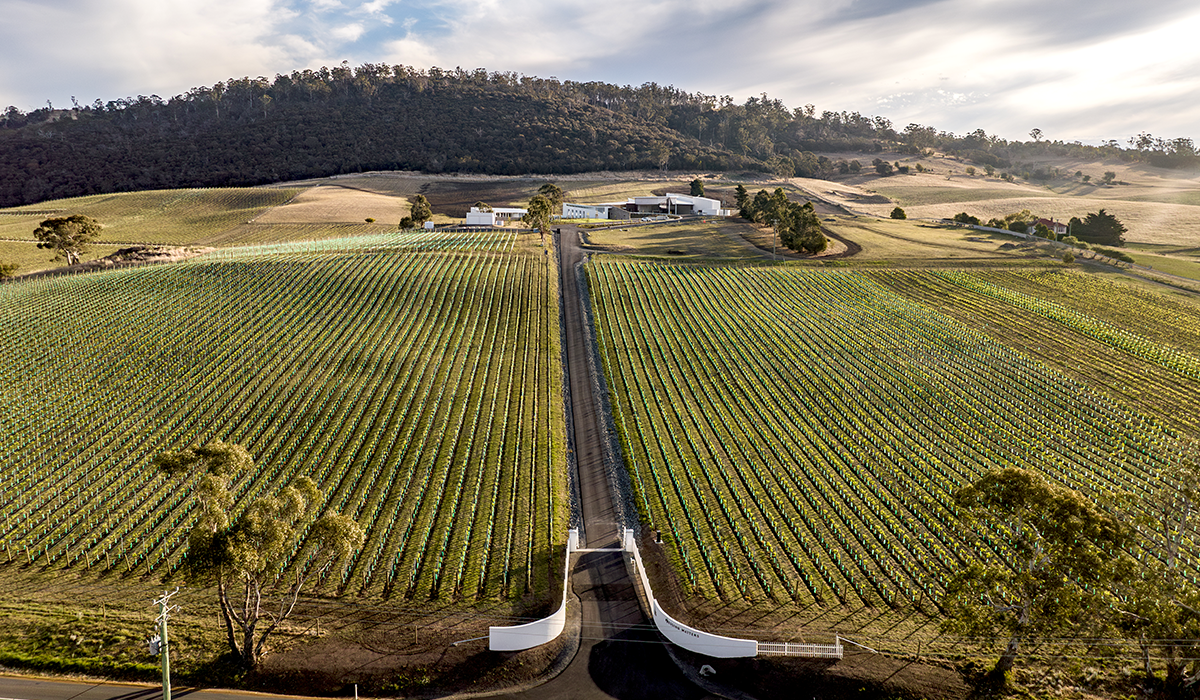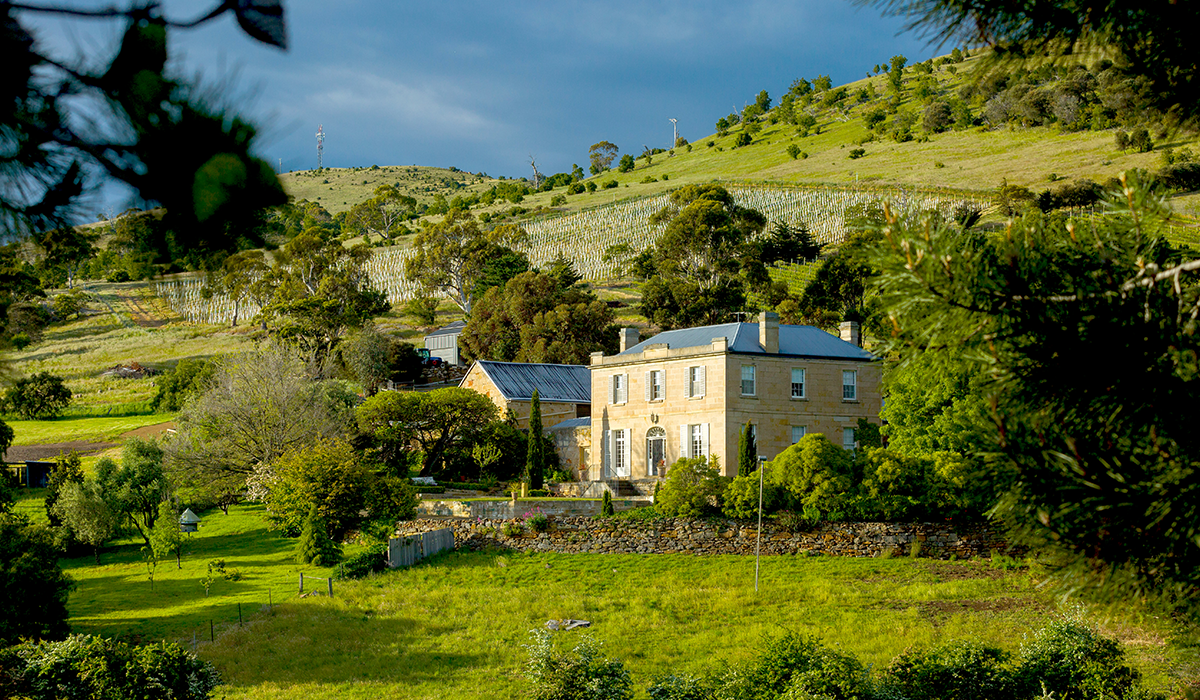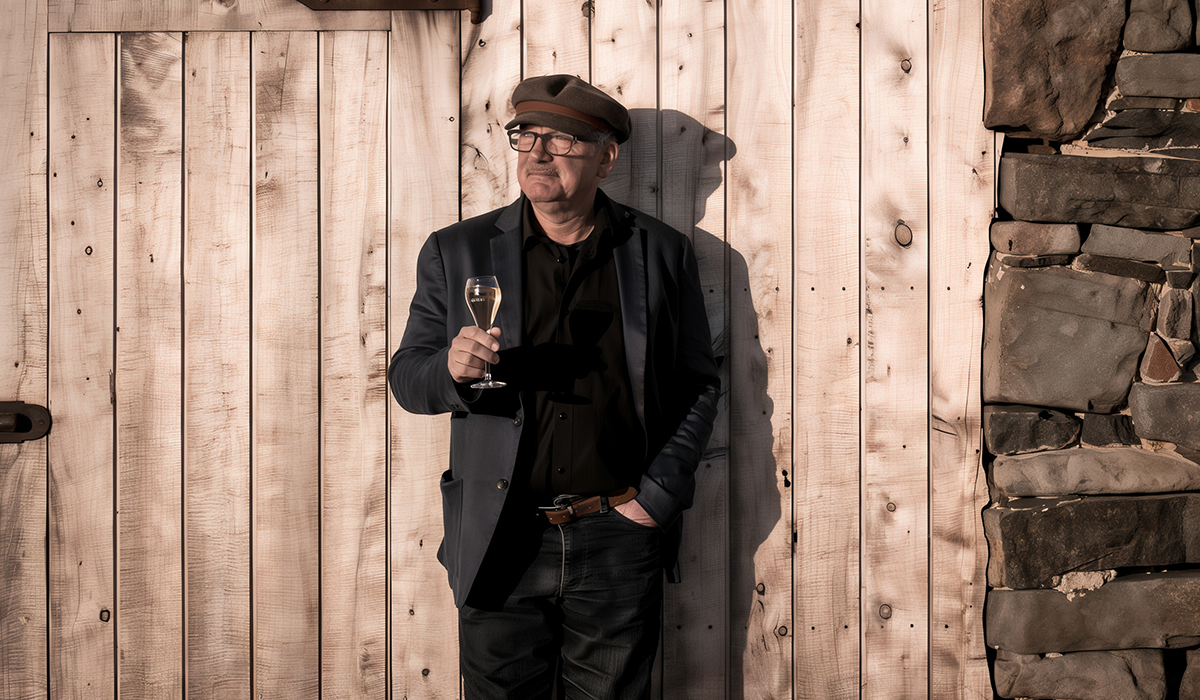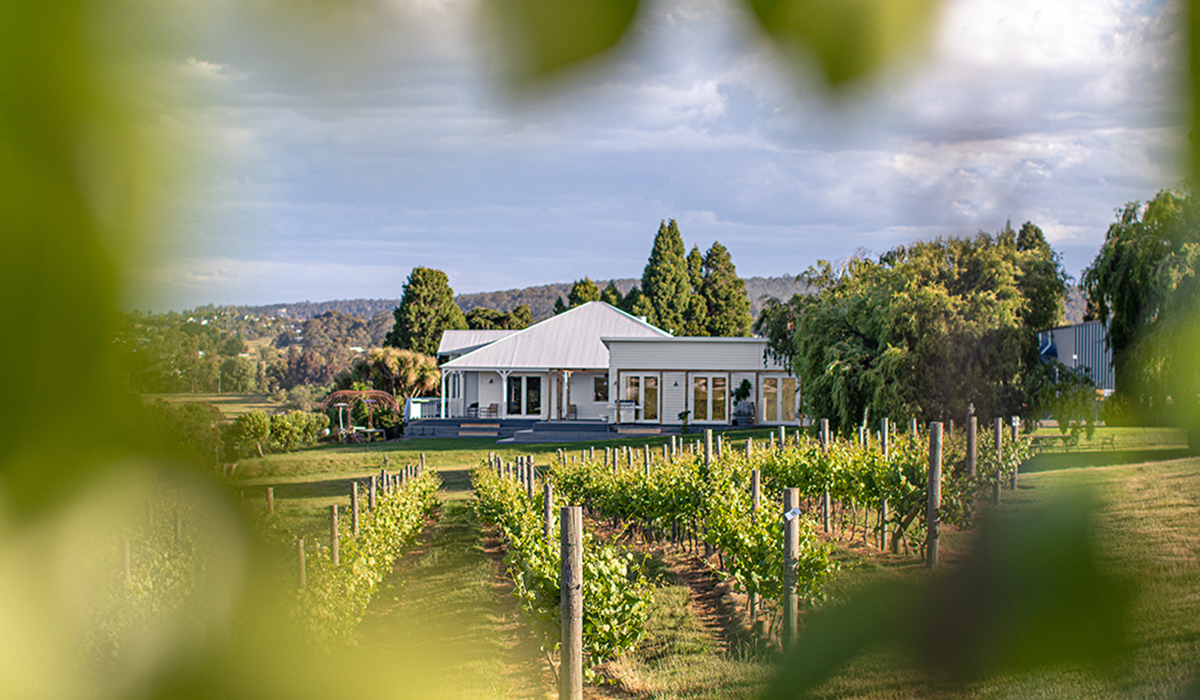I’ve got to admit, I’m somewhat besotted with Tasmania. Its confluence of natural beauty, wine, food, produce, art and history all wrapped in a tight compact package seems to resonate with me. Maybe that’s the Kiwi coming out in me, as I can certainly see some parallels between the two. I’m lucky enough to travel down there often as it is part of my Halliday tasting beat, and each time I do I learn something new, another layer peels off, another piece of the puzzle falls into place.
 Pressing Matters.
Pressing Matters.
Pressing Matters Avery Forum
On my most recent visit, in mid-July, I set down roots in the Coal River Valley for a few days to attend the 2024 Avery Forum at the Pressing Matters winery, an initiative from owners Greg Melick and Anthony Hall honouring the late John Avery MW.
The yearly event sees 10 bright young things from Tasmania’s wine industry treated to four brackets of the world’s finest wines, this year chardonnay, with a plethora of top-flight white Burgundies, the wines judged in silence and discussed amongst the group and panel members. It’s a great opportunity to try some extremely rare and sought-after wines, beyond the reach of most, and to see where Australian wines sit in relation to the world’s benchmarks. The TLDR is that they are very well positioned indeed.
The following day, as I drove around Tea Tree and up to Campania, pointing excitedly at both existing vineyard sites and in my noggin, future ones, my mind wandered to the revered slope plantings of Burgundy and I couldn’t help but think of the potential that lies within the Tasmanian wine industry.
 Pooley Wines.
Pooley Wines.
Pooley vineyards
I visited the Cooinda Vale and Butcher's Hill vineyards of Pooley Wines and tasted the stellar latest releases with Anna Pooley and Justin Bubb, and went on a vineyard tour, gazed at the impressive new winery build and tasted the soon-to-be released Sisu wines with Jake Sheedy. There are lots of exciting things happening in the Coal River Valley.
That’s not to say everything has been plain sailing. The Greater South East Irrigation Scheme was slated to be a boon for the industry, until it wasn’t. The federal government knocked back, hopefully temporarily, a plan put forward by the Tasmanian government and TasWater that would have bypassed Hobart’s system and provided cheaper water for the Coal River and Jordan Valleys.
Best wineries to visit in Tasmania
The plan relied on $150 million from the federal budget that wasn’t forthcoming. Fingers crossed that this initiative goes through in the next budget so that these regions and Tasmanian wine can reach their potential and look brightly into a sustainable future for the wine industry. Every time I visit Tasmania there seems to be a couple of newly opened cellar doors (recently Bream Creek, Evenfall and Bellebonne, Pressing Matters), words of new ones being built, and excited talk of the ones being planned, as interest in Tasmania’s wines continues to swell.
 House of Arras' Ed Carr.
House of Arras' Ed Carr.
Award-winning Tasmanian wines
The states continues to clean up at wine shows at home and abroad, recently picking up nine awards at the 2024 Decanter World Wine Awards, including two Best in Show for the 2022 Bay of Fires Tasmania Pinot Noir and 2022 Lowestoft Jacoben Single Vineyard Pinot Noir.
House of Arras chief winemaker Ed Carr was awarded the Sparkling Winemaker of the Year at the 2024 International Wine Challenge in London – the first Australian to win the award and only the second ‘non-Champagne’ winner in the competition’s 40-year history. He also won the Australian Sparkling Trophy for the 2014 House of Arras Blanc de Blancs, plus two gold and six silver medals.
Tasmania has had a purple patch of fine vintages in recent years, with 2019, 2020 and 2021 producing some stellar wines. But any agricultural venture can be challenging, and the weather during flowering impacted yields in both 2022 and 2023 particularly, with some vineyards down between 30 and 50 per cent.
 The Evenfall and Bellebonne cellar door.
The Evenfall and Bellebonne cellar door.
Wine Tasmania 2024 Vintage Report
Despite these growing season challenges, the wines from ’22 and ’23 are wonderful, showing clearly delineated aromas and flavours, pure fruit and a fine acid and tannin architecture, albeit with a little more concentration within their frame, but still displaying the trademark regional elegance and clarity that we’ve come to expect from Tasmanian wines. Wine Tasmania sent out their 2024 vintage report in early July and it looks like the yields have thankfully returned to normal, harvesting the equivalent of approximately 14.5M bottles of wine from 16,805 tonnes, up 36 per cent on the previous vintage.
Paul Smart, Wine Tasmania’s Viticulture & Winemaking Officer, welcomed the positive vintage results, saying: “Based on wine grapes harvested across the country’s 65 wine regions, Tasmania is the 13th largest by volume but the fifth most valuable, up from 10th most valuable in 2023. After four low-yielding seasons in Tasmania, a return to solid volumes has been very welcome alongside excellent quality and will help Tasmania satisfy the ever-increasing global demand for its wines.”
 Moorilla's Conor van der Reest.
Moorilla's Conor van der Reest.
Best wineries in Tasmania
There’s no doubt Tasmania is the hottest kid on the block, producing world-class sparkling, pinot noir and chardonnay, plus others such as shiraz/syrah (this has been a revelation for me – seek out examples from Havilah, Moorilla Estate, Kate Hill, Ossa Wines, or Haddow + Dineen), and its future is looking very bright indeed.
When you next travel down to Tasmania, take your time. Ask the winemakers and cellar door staff about the history of the land, which way the wind blows and what is that sweet smell on the breeze. Stop at farm gates, relish in the produce, drink a pint of Cascade at a local pub and chat to the locals. Take note of the clarity of the light and ruminate on the possibility of there being trout in that wee stream.
Slow down. Like Barry Lopez says, “To explore is to travel without a hypothesis.” Tasmania and its wines are the perfect canvas to perfect this fine thought.